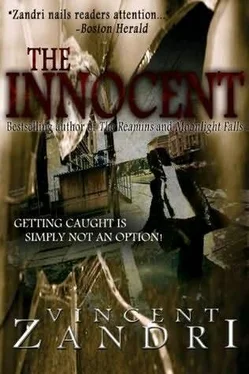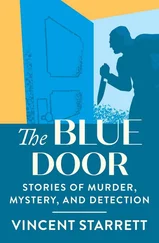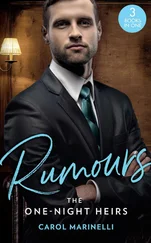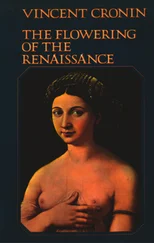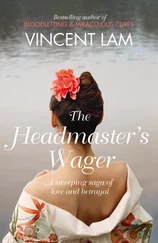This time the boys sat on their bikes in the center of the giant crater, with the dark, murky water coming up past their ankles. I guess they kind of enjoyed the muddy water. I guess it had a way of holding their interest or cooling them down or both. As I pulled a cigarette from my pocket and fired it up, the kid with the aviator sunglasses flipped me the bird. Just a middle finger raised high from a tough little guy. The second time someone had flipped me off in as many hours.
The kid in the red baseball jacket laughed.
I hoped they’d both catch pneumonia. Double pneumonia.
But then I saw Fran’s face. Fran, the elementary school teacher. I saw her scolding me for my despicable attitude toward a couple of harmless adolescents.
Harmless, my ass.
BACK IN SEPTEMBER OF 1971, during the third day of the Attica riots, a corrections officer by the name of Mike Norman decided to drop out of the madness. No more shivs made from prison-issue razor blades pressed into toothbrushes, no more poles sharpened into spears, no more trenches dug out of D-Yard, no more COs with their throats slit. No more tear gas, handcuffs, blindfolds, and burning buildings. No more bonfires, no more helicopters, no more rain, no more suicide.
I was eighteen years old and engaged to be married.
That night, in the middle of D-Yard, Mike Norman curled up his lanky body like an embryo and went to sleep on the ground where twelve of us had been ordered by the rebel inmates to drop. Half a dozen inmates pointed homemade shivs and spears at the backs of our heads. When a young black man with sunglasses and a black do-rag wrapped around his bald head tried to wake Norman, Norman wouldn’t budge. He wasn’t sick. But then he didn’t even appear alive except for the soft breathing. He was just sleeping peacefully, with a slight smile planted on his face, even with that rebel inmate screaming in his ear, “Wake up, motherfucker. Wake up or I’ll cut your throat you don’t wake up.”
He didn’t move when the inmate tried to slap that little smile off his baby face, or when the inmate picked up his feet and dragged his skin and bones along the gravel floor of D-Yard. He slept through the state troopers’ failed ambush, when they hit and killed two of their own COs. He slept for two full days during the Attica riots of September 1971- the week the nation’s entire penal system nearly caught fire.
Me and Washington Pelton, a fellow CO, humped Mike Norman around by his hands and feet, keeping him out of harm’s way as best we could. The rebel inmates made jokes about the sleeping beauty, taunting us with sinister kisses in the air. I could understand wanting to drop out. We all wanted to drop out. Still, I could not understand how he had managed to sleep through those final impossible hours.
He was asleep on the last day of our incarceration when a rebel inmate cut Wash Pelton’s throat with a razor blade. The jagged scar would stay with Pelton for years, like a tattoo gone bad. And he continued to sleep when the state troopers rushed the thirty-foot stone walls and stormed D-Yard, and when I tackled a rebel inmate from behind and plunged a shiv into his neck.
We lost twelve men during that riot. No one went unscathed, except for sleeping beauty-my buddy. Inmates and officers died all around him. To this day I can’t be sure if he faked that sleep, or if his nerves had given out and truly left him catatonic. But here’s the weird thing: Whatever he did, it worked. By dropping out of life, Mike Norman managed to stay alive.
I couldn’t decide if Corrections Officer Bernard Mastriano had a different thing going or not.
What was certain was that he had a room in Newburgh General with a color TV mounted high on the wall. When I walked in he was laid out flat on the bed, a clear tube up his nose, an IV stuck into the underside of his right arm. He was alone, knocked out cold. The hospital bed beside his was empty. The fact that I was in the room had nothing to do with visiting hours, which during mealtime were suspended for anyone not belonging to the immediate family. According to the elderly woman with an Italian accent who worked the reception desk, normal visiting hours didn’t resume until seven at night. But I flashed her my badge and that’s all it took for me to be admitted to the ICU ward.
Before I tried to wake Mastriano, I took a good look at his face and recalled what Logan had said about him being struck in the head with the butt end of a shotgun. From where I stood, the black-haired, fat-faced man didn’t have a scratch on him. He looked in better shape than Logan had.
I grabbed his arm just above the needle that supplied his intravenous. I shook it.
Mastriano mumbled a couple of words, opened his eyes, and closed them again. His face was tan and fleshy, the corners of his mouth turned up like he couldn’t hold himself back anymore, like he was about to break out into a fit of laughter.
I shook him again, but there was still no response other than some incoherent mumbling. I bent at the knees, put my mouth up to his ear. “Mastriano,” I whispered. “Can you hear me?”
No visible sign that he could.
But at the chance he might be faking it, I went on with what I had to say. “I want to hear about what happened out there today. I want to hear your story. Understand, Mastriano?”
I glanced over my shoulder at the open door. Nurses walked back and forth from room to room, clipboards and plastic water bottles in hand. It was then that I began running my fingers along Mastriano’s right temple, feeling for any evidence of a bump or abrasion. I ran my fingertips all through his thick, black hair, felt the cold, bumpy scalp. I would have run my hand through a second time too, had the doctor not walked in.
“Excuse me,” he said. “But is there some kind of problem?”
He was a short, curly-haired, young man. A kid really. He wore a tweed suit jacket, khakis, and running shoes. He had a laminated identification card with his photograph and a name I could not make out pinned to his jacket. He carried a clipboard in his right hand and wore a stethoscope around his neck. What he did not wear, however, was the usual knee-length, hospital-white lab jacket.
I took my hands away from Mastriano’s scalp and smiled. “Maybe you can help me,” I said. “What’s this man’s diagnosis?”
The doctor reached for the pen in the breast pocket of his blazer. “You related to the patient, sir?”
I pulled out my wallet. But this time, I did not flash my badge. Instead, I showed the good doctor my valid prison ID. “Keeper Marconi of Green Haven Maximum Security,” I revealed. “This man works for me.”
This time the doctor took a breath. “When the patient was brought in, he was already unconscious. The officer who came in with him said he was knocked out cold with the stock end of a shotgun.”
“Be honest, Doc,” I said. “Did this man take a blow to the skull with a blunt object?”
The doctor let out a breath. “No,” he said. “No sign of it that I could see, anyway. What he does have is a couple of bruises to the head, but nothing that would have been caused by the back end of a rifle. At least, I don’t think so at this point.”
“You’re certain of this?”
“Pupils aren’t uneven. No other lateralizing signs like paralysis, decreased reflexes, descerbrate posturing. In terms of the Glasgow coma scale, I’d say he’s a two, maybe a three.”
“Glasgow?” I asked.
“The medical standard by which we measure the seriousness of a head injury. The higher the score, the worse off you are. In theory, at least.”
“What do you think, in theory?”
“His relaxed state could be due to Descorticate Syndrome, which could mean injury to the cortical level of the brain.”
Читать дальше
